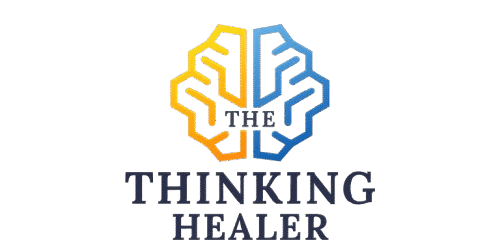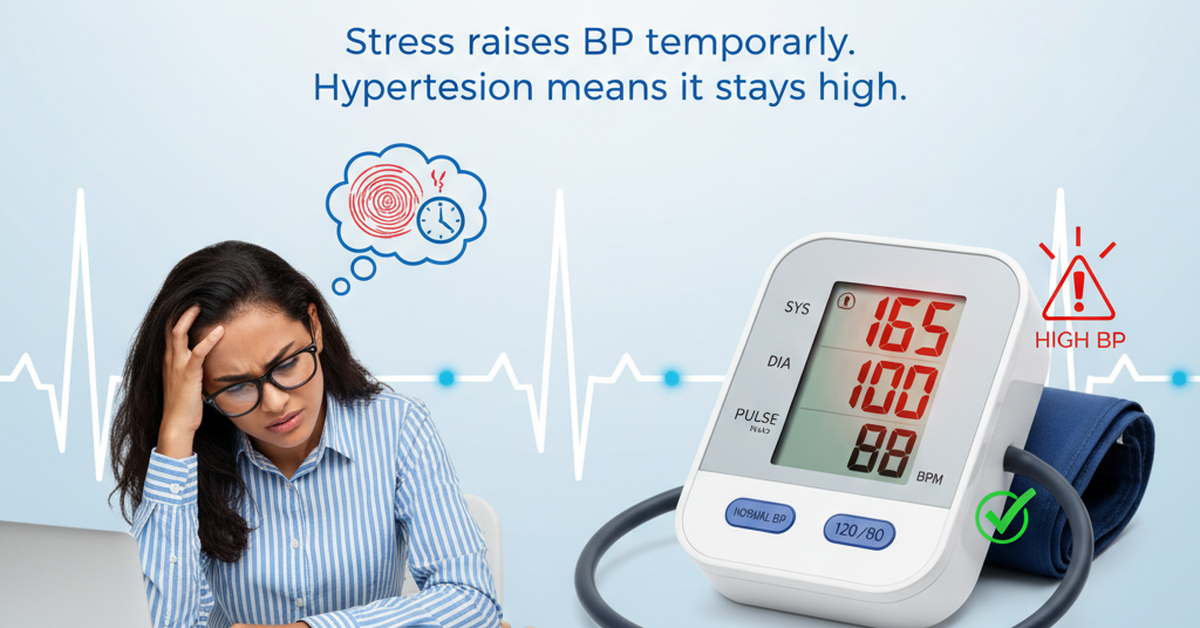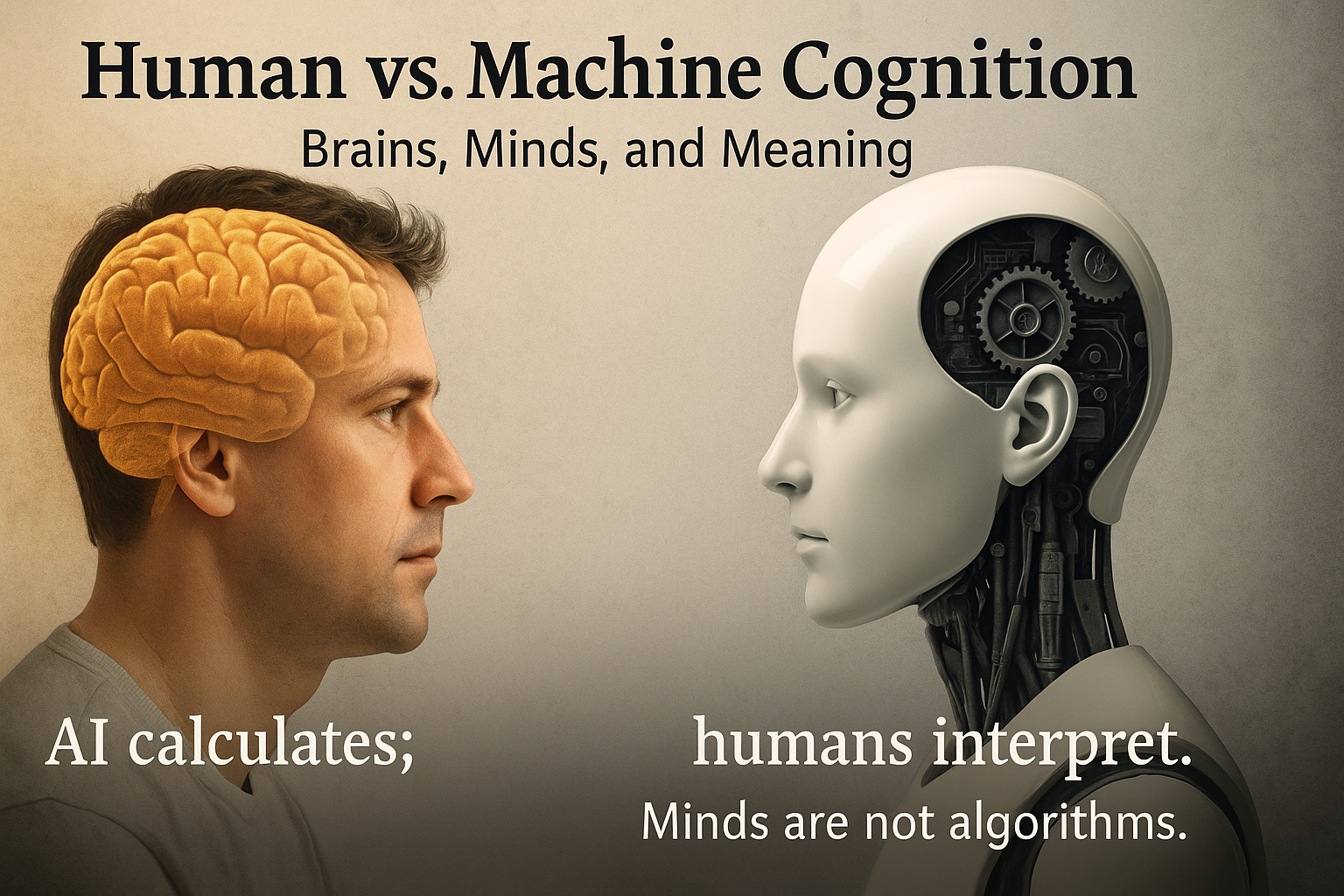1. Everyday Tension vs. Hypertension
Everyone feels tension in daily life:
- A student nervous before exams.
- A worker facing deadlines.
- A parent worried about children.
In these moments, your heart may beat faster, and your blood pressure (BP) can rise temporarily. This is normal. Once the situation calms, your BP usually returns to normal.


2. What Hypertension Really Means
Hypertension isn’t diagnosed from just one or two high readings. It is a consistent pattern of elevated BP over days or weeks.
– AHA 2025 (USA guidelines): Hypertension = average BP ≥130/80 mmHg.
– ESC 2024 (European guidelines): Hypertension = average BP ≥140/90 mmHg.

3. Why BP Rises in Tension (Body’s Stress Response)
When you are stressed, angry, or anxious, your body releases stress hormones (like adrenaline). These cause:
– The heart to pump faster.
– Blood vessels to narrow.
This leads to a temporary BP spike. Once the stress passes, BP usually normalizes.
But in true hypertension, the reset doesn’t happen. Blood vessels remain stiff, keeping BP high even when you’re relaxed.
4. Why the Distinction Matters
- Over-diagnosis: Mistaking temporary spikes for hypertension may lead to unnecessary lifelong medication.
- Under-diagnosis: Ignoring true hypertension silently damages the heart, brain, kidneys, and eyes.
- Correct diagnosis: Needs repeated checks, proper methods, and your doctor’s guidance—even if it was just one high reading.
5. How to Confirm Hypertension—Step by Step
At the Clinic:
- BP is checked 2–3 times in one visit, 1–2 minutes apart.
- Repeated on at least 2 separate visits.
- Only then is a diagnosis made (unless very high or urgent).
At Home (with a BP machine):
- Morning: 2 readings before breakfast/medicines.
- Evening: 2 readings before dinner/bed.
- Do this for 3–7 days in a row.
- Ignore day 1 if you’re new to it.
- Average the rest.
- If average ≥130/80 → hypertension.
With 24-Hour Monitor (ABPM):
Small machine with a cuff that records day & night.
Thresholds:
• 24-hour average ≥125/75 mmHg
• Daytime average ≥130/80 mmHg
• Nighttime average ≥110/65 mmHg

- Clinic = 2 visits × 2 readings each.
- Home = 2×2 readings/day × 3–7 days.
- If in doubt, do a 24-hour ABPM.
6. What Causes Temporary BP Spikes (Not Hypertension)?
BP may rise briefly because of:
- Stress, anxiety (exam, argument, interview).
- Coffee/tea or energy drinks (caffeine).
- Smoking/vaping (nicotine).
- Talking or moving during measurement.
- Full bladder.
- Cold weather or shivering.
- Poor sleep or rushing to the clinic.
- White Coat Hypertension: Anxiety in a doctor’s office can raise BP by 10–20 mmHg, even if home readings are normal.

7. What’s New in the 2025 AHA/ACC Guidelines (Simple Version)
1. PREVENT™ Risk Tool: Doctors now assess not just BP but also heart, kidney, sugar, weight, and even where you live (e.g., pollution, stress, less healthcare access).
2. More Lab Tests:
• Kidney function (albumin/creatinine ratio) for all with high BP.
• Hormone check (aldosterone) for resistant hypertension.
3. Stricter Target: Universal goal = <130/80 mmHg for most adults, protecting both heart and brain (dementia risk ↓).
4. Medicines:
• Stage 2 (≥140/90): Start with 2 drugs, ideally in one pill.
• GLP-1 drugs for obese/diabetic patients.
• Pregnancy: Start at 140/90; continue close monitoring after delivery.
5. Lifestyle First:
• Salt: <1 teaspoon/day (≈2,300 mg sodium; best = ¾ teaspoon ≈1,500 mg).
• DASH diet: Fruits, veggies, dals, sprouts, whole grains, less fried/junk.
• Lose ≥5% weight if overweight.
• 30 minutes of walking most days.
• Stress control (yoga, meditation, breathing).
• Regular home BP monitoring.

8. What Untreated Hypertension Can Do (Silent but Serious)
If left untreated, it can quietly damage:
- Heart: heart attack, heart failure
- Brain: stroke, memory loss, dementia.
- Kidneys: kidney failure.
- Eyes: vision loss.
9. Simple Tips for Everyday People
- Don’t panic if your BP is high once—but do tell your doctor to be safe.
- Sit calmly, wait 5–10 minutes, and recheck.
- Measure at the same time daily, when relaxed.
- Avoid caffeine, smoking, or rushing 30 minutes before checking.
- Keep a BP diary or use a phone app.
- Share all readings, even a single high one, with your doctor.
- Remember: The machine gives numbers. Doctor gives meaning.
10. The Thinking Healer Reflection
Life will always bring tension—exams, jobs, money, family.
But not every tension is hypertension.
Still, if that tension becomes a constant biological pattern, it turns into hypertension—and needs care.
The wisdom of medicine is in balance:
- Don’t over-label every rise as a disease.
- Don’t ignore repeated highs or even one unusual reading.
- Be patient, thoughtful, and wise in diagnosis.
11. Closing Line
So the next time your BP rises after a stressful day, take a breath and recheck calmly. One high number doesn’t define your health. But even a single high BP reading should be discussed with your doctor—to be sure nothing important is missed. If hypertension is confirmed, early and wise care will protect your heart, brain, kidneys, eyes, and your future self.
BP Thresholds at a Glance
| Setting | Hypertension Threshold |
| Clinic (AHA 2025) | ≥130/80 mmHg |
| Clinic (ESC 2024) | ≥140/90 mmHg |
| Home Monitoring | Average ≥130/80 mmHg |
| 24-Hour ABPM (Overall) | ≥125/75 mmHg |
| ABPM (Daytime) | ≥130/80 mmHg |
| ABPM (Nighttime) | ≥110/65 mmHg |
References
1. Whelton PK, Carey RM, et al. 2025 AHA/ACC/Multisociety Guideline for High Blood Pressure in Adults. Circulation. 2025.
2. Williams B, Mancia G, et al. 2024 ESC/ESH Guidelines for Hypertension. Eur Heart J. 2024.
3. American Heart Association. High BP: Understanding the Numbers.
4. Mayo Clinic. Caffeine and Blood Pressure.
5. Cleveland Clinic. White Coat Syndrome.
6. SunTech Medical. 10 Factors That Can Affect Blood Pressure Readings.
Disclaimer
This article is for educational purposes only and is not a substitute for medical advice. If you have a single high BP reading, repeated high readings, symptoms, or concerns, consult your doctor. Do not start, stop, or change medicines without professional guidance.





Dr Geetanjali
Simple yet informative.